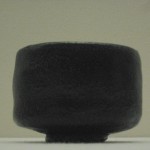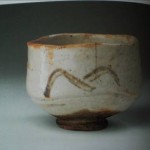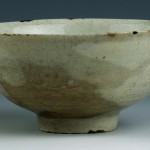Gute Adressen:
Chaja 1st tea to go, Oranienburger Straße 27, Mitte, Tel. 0172-582 64 23, www.chajatea.de; Mo-Fr 8-20 Uhr, Sa+So 9-21 Uhr
Chén Chè Teehaus, Rosenthaler Straße 13, Mitte, Tel. 28 88 42 82, www.chenche-berlin.de; tgl. 10-24 Uhr
TeeTeaThé Goltzstraße 2, Schöneberg, Tel. 21 75 22 40, www.teeteathe.de; Mo-Fr 9-22 Uhr, Sa 9-20 Uhr, So 10-20 Uhr
——————————
TEEBAUKASTEN
Kreativ
Nach dem Baukastenprinzip können die Tees selbst zusammengestellt werden. Dabei wird eine Auswahl an Basistees mit bis zu drei weiteren Zutaten wie Blüten, Früchten oder Gewürzen gemischt. Besonders beliebt ist laut Mitinhaber René Kellner momentan Roibuschtee mit Kakaoschalen, Vanille, Karamel oder Zimt. Aber auch pikante Ingredienzien wie Karottenstücke, rosa Pfeffer oder Chili sind möglich. Bewusst gewählt ist die Begrenzung der Zutaten: So kommen noch die einzelnen Aromen zur Geltung. Am Ende kann ein Name für die Eigenkreation gewählt werden, der auf das Etikett gedruckt wird. Wer sich von allzuvielen Möglichkeiten erschlagen fühlt, kann auf eine der Fertigmischungen zurückgreifen.
Der Teebaukasten Neue Bahnhofstraße 33, Friedrichshain, Tel. 48 48 67 66, www.derteebaukasten.de; S-Bhf. Ostkreuz; Mo-Fr 10-19 Uhr
——————————
TEEATER
Entspannt
Als „unorthodox“ bezeichnet Sabine Landsberger ihren Laden im Helmholtzkiez gerne. Auch Menschen, die selten Tee trinken und sich weniger gut auskennen, sollen sich wohlfühlen. Darum ist erlaubt, was schmeckt, und Kundenwünsche stehen an erster Stelle. In einer persönlichen Beratung findet sich für jeden der passende Tee. Das Angebot reicht von Schwarz-, Weiß- und Grüntees in allen Preisklassen über Bio-Tee bis hin zu Kräuter-, Früchte- und Gewürztees. Für alle, die Tee zu Weihnachten verschenken möchten, empfiehlt Sabine Landsberger „nicht die typischen Weihnachtstees, sondern zum Beispiel die Mischung ,Liebling der Nation‘, ein würzig-fruchtiger Kräutertee“. Um das Präsent abzurunden, sind die Regale des Ladens zusätzlich mit Utensilien für die richtige Zubereitung des Tees, edlen Süßigkeiten und bunten Dekoartikeln gefüllt.
Teeater Raumerstraße 29, Prenzlauer Berg, Tel. 447 79 15, www.teeater.de; S-Bhf. Prenzlauer Allee, U-Bhf. Eberswalder Straße; Mo-Fr 10 bis 19 Uhr, Sa 10-14 Uhr, bis 23.12. Mo-Fr 10-20 Uhr, Sa 10-18 Uhr, So 13-18 Uhr
——————————
TEE & TON
Fernöstlich
Gutes Blatt, gutes Geschirr, gutes Wasser und gute Gäste sind nach Meinung von Inhaberin Thi Anh Nguyen essenziell für guten Tee. Bei den ersten beiden Punkten kann sie weiterhelfen: Jeweils über 60 Sorten grüner und schwarzer Tee, dazu 35 Kräuterteemischungen werden präsentiert. Darüber hinaus werden Monokräuter von Anis bis Weißdorn für individuelle Mischungen angeboten. Wer möchte, kann sich nach dem passenden Behältnis für das edle Getränk umsehen: Eine Auswahl japanischer Teeschalen und -kannen steht bereit. Letztere mögen mit ihrem Fassungsvermögen von 170 bis 620 Millilitern winzig erscheinen – doch so kann der Tee problemlos mehrmals aufgegossen werden, erklärt Thi Anh Nguyen.
Tee & Ton Marienburger Straße 11, Prenzlauer Berg, Tel. 40 30 14 50, www.tee-und-ton.de; Tram M2, M4; Mo-Fr 10-20 Uhr, Sa 10-18 Uhr
——————————
MILCH & HONIG
Natürlich
Inhaber Jimmy El-Sawei ist viel herumgekommen: Nach Stationen in Hongkong, Israel und Schweden hat sich der Neuseeländer hier niedergelassen. Ebenso weit gereist sind die sorgfältig ausgewählten Produkte im Laden: Naturtees aus Kairo, Grüner Tee aus China und orientalische Gewürze aus Ägypten. Ein Schwerpunkt sind Heilkräuter, wie zum Beispiel der ägyptische Bergtee, eine Salbeiart, die gegen Erkältungskrankheiten hilft. Für alle, deren Wohlbefinden sich nicht allein durch heißen Tee wiederherstellen lässt, werden zudem nach Vereinbarung Massagen und Naturheilbehandlungen angeboten: Jimmy El-Sawei ist ausgebildeter Physiotherapeut.
Milch und Honig Weidenweg 19, Friedrichshain, Tel. 28 03 71 48, www.milchhonig.com; U-Bhf. Frankfurter Tor; Mo-Fr 10-20 Uhr, Sa+So 17-20 Uhr
https://www.berlinonline.de/berliner-zeitung/archiv/.bin/dump.fcgi/2009/1218/berlinplanergeschmackssache/0016/index.html


